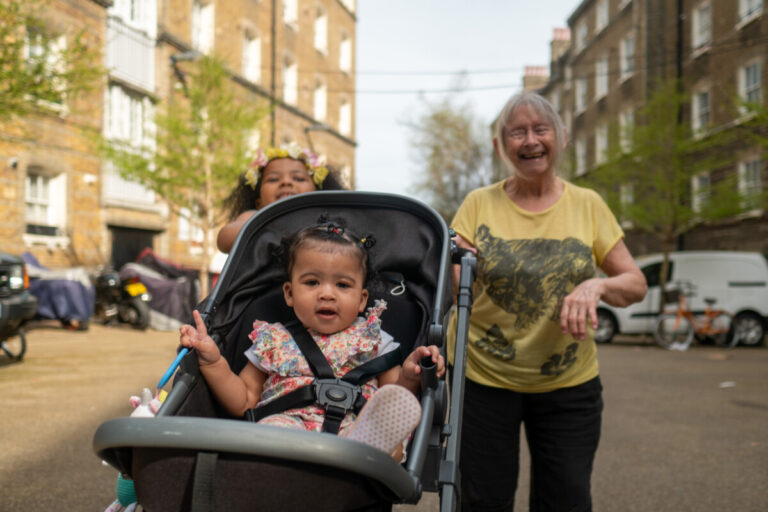The future of legacies is huge, crowded and more

Meg Abdy and Rob Cope are both passionate champions of legacy giving. At a breakfast briefing event at CIOF’s Fundraising Convention, they reflected on their time in legacy fundraising as they both move on.
Earlier this year Meg announced that she was retiring from Legacy Foresight (part of the Legacy Futures Group) after 25 years analysing the UK legacy market. In June Rob Cope moved to a new role at CIOF after 12 years of leading the sector’s legacy consortium Remember A Charity in its mission to grow and normalise legacy giving.
They talked about how the sector’s attitude to legacies has changed and where it is going next.
Advertisement
The future of legacies is huge
The data shows that legacy giving is booming. More people are adding charities to their wills. Forecasting models predict that this growth will continue and even accelerate despite perennial world and domestic challenges. Currently these include the war in Ukraine and the cost of living crisis, both of which are causing shockwaves in global and domestic economies. Despite these events and future
unknown ones on the horizon, the market remains strong.
Meg’s message was that we need to keep the faith. It is hard to plan, hard to persuade that investment is needed. But the future of legacies will be huge.
The future of legacies is crowded
However, the market is crowded. When Rob started at Remember A Charity, there were 120 members, mostly larger charities. Some avoided promoting legacies in case it offended supporters. Legacy marketing tended to be safe, conservative.
We’ve all moved on a long way from this with more emotive, memorable and challenging activity, all seeking to strengthen trust and engagement. New sectors have embraced legacies such as arts and culture organisations, hospices, hospital charities, higher education; all establishments that people have strong connections with.
According to Smee & Ford, last year, over 10,500 charities benefitted from gifts in wills – the highest number for a decade. For many charities, legacies are a sizeable portion of their annual income. Now they are fighting to keep their market share.
Being in a crowded market should sharpen people’s minds. “The pie is getting bigger but our slice is getting smaller,” as one charity said in their conference session.
The future of legacies is people like Meg
When Meg first started analysing legacy income in 1994, the people who leaving gifts in their wills were those who hadn’t married after WWI. The people who are dying now are people who grew up during WWII. Now we’re looking ahead to the baby boomers, people like Meg, born in the 60s, going to university in the 80s, often with complicated lives but with a strong sense of purpose. They care about social issues and the future.
Our marketing needs to speak to these people. They are looking for opportunities as trustees, volunteers as well as donating. We need to move away from the Dorothy Donor stereotype. We need to show the joy of legacies to people who care about social change.
The future is you
Rob thinks that legacies are the best way to create change in the sector. In a sample of 30 large legacy charities, legacies accounted for just 4.6% of marketing spend, but generated around 44% of voluntary income. Think what could be done with further investment!
To grow, it needs leadership within organisations. It needs directors of fundraising, senior managers and the board to recognise the potential and put investment into it. It needs them to see and value the long game beyond the next budgeting round or restructure. It needs legacy managers to be senior and act strategically.
A number of sessions in the legacy stream featured charities showing that their project or strategy succeeded because of this buy-in at top level. We need this to be the norm.
The future is multicultural
But we also have a problem. As a legacy sector, we are not diverse. Our teams don’t reflect the age of the people we need to appeal to. They don’t tend to represent different faiths, cultures or backgrounds. We need to look at our teams, our marketing, our messaging. Comms needs to give voice, not just token pictures. We need to share benefits that mean something to everyone, whatever their
background.
The future is multichannel
For some charities, it took a long, long time to use digital as part of their marketing and management. Covid has been a big accelerator across all of charity digital marketing and stewardship. Legacies has benefitted from that too. But we need innovation. Digital is disruptive. We can test and learn what works. It is cost efficient and measurable.
As we enter new spaces and new channels emerge, we need to drive forwards, not rest.
A call to action
So a call to action from Meg and Rob as they leave their own legacies of knowledge and insight to the sector. Legacy giving is an act of rebellion and of hope. As a sector we need to champion legacy giving so much more. We need to be ambitious for the future. We need to innovate and inspire people on this fantastic journey.



